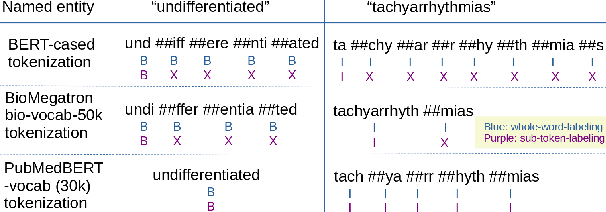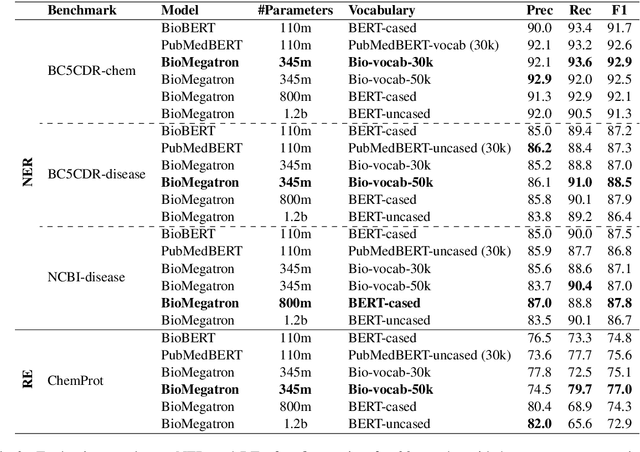Raghav Mani
BioMegatron: Larger Biomedical Domain Language Model
Oct 14, 2020



Abstract:There has been an influx of biomedical domain-specific language models, showing language models pre-trained on biomedical text perform better on biomedical domain benchmarks than those trained on general domain text corpora such as Wikipedia and Books. Yet, most works do not study the factors affecting each domain language application deeply. Additionally, the study of model size on domain-specific models has been mostly missing. We empirically study and evaluate several factors that can affect performance on domain language applications, such as the sub-word vocabulary set, model size, pre-training corpus, and domain transfer. We show consistent improvements on benchmarks with our larger BioMegatron model trained on a larger domain corpus, contributing to our understanding of domain language model applications. We demonstrate noticeable improvements over the previous state-of-the-art (SOTA) on standard biomedical NLP benchmarks of named entity recognition, relation extraction, and question answering. Model checkpoints and code are available at [https://ngc.nvidia.com] and [https://github.com/NVIDIA/NeMo].
 Add to Chrome
Add to Chrome Add to Firefox
Add to Firefox Add to Edge
Add to Edge